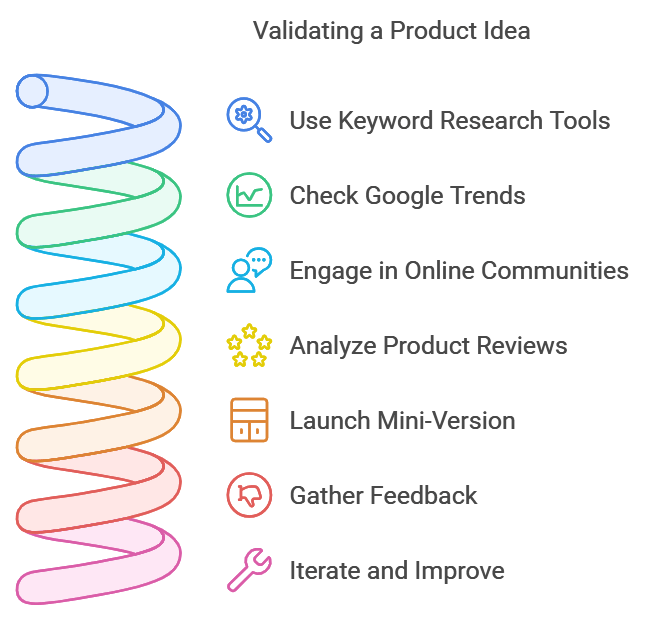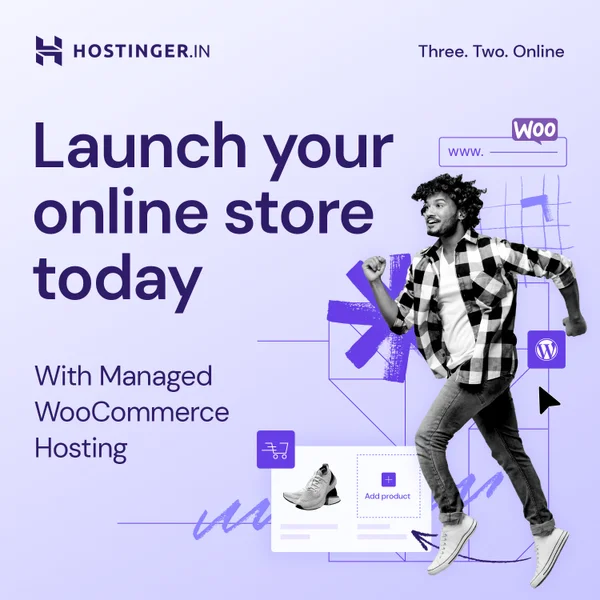Hey there, future digital entrepreneur! Ever dreamed of ditching the 9-to-5 grind and being your own boss? Or maybe you’re looking for a side hustle that can bring in some extra cash without taking over your life. Well, guess what? Selling digital products online might be your golden ticket!
want to listen to the podcast instead ?
Introduction: The Digital Gold Rush – Why You Should Be Selling Digital Products
The world’s gone digital, and the way we do business is changing right along with it. Digital products, like ebooks, online courses, templates, and software, are exploding in popularity. Why? Because they’re super convenient, accessible anytime, anywhere. Plus, for creators like you, they offer a ton of advantages.
Think about it: the online education market alone is projected to hit a whopping $166.60 billion in 2023! That’s a whole lot of people eager to learn new skills and gain knowledge—and a massive opportunity for you to share your expertise and make a profit.
The best part? You don’t need a fancy degree or a ton of money to get started. Creating an ebook or a simple course can be done with free tools like Google Docs or Canva. No need to worry about manufacturing, shipping, or storing physical inventory—it’s all digital!
Plus, once you’ve created your product, you can sell it again and again without having to restock. Talk about passive income! You can reach customers worldwide, work from anywhere, and scale your business as you grow. Sounds pretty sweet, right?
Discovering Your Digital Niche: What Will You Sell?
Okay, so you’re pumped about the digital product game. But with so many possibilities, where do you even begin? First things first: finding your digital niche!
Imagine a world where you can:
- Unleash your inner artist: Sell digital art prints, design stunning website themes, or offer photography editing presets. Platforms like Etsy and Creative Market are great for creatives!
- Become a digital teacher extraordinaire: Share your knowledge through online courses, create helpful teaching materials, or even offer personalized coaching sessions. Thinkific, Udemy, and Coursera are your go-to platforms.
- Rock the business world: Craft comprehensive business plans, develop killer marketing strategies, build custom Excel templates, or provide expert consulting services. Thinkific and Upwork are perfect for showcasing your business prowess!
The key is to focus on a specific area you’re passionate about and where you have some expertise. This way, you can tailor your products to a targeted audience and become a go-to expert in your field.
Need some inspiration? Check out these niche success stories:
- Fitness for seniors: One entrepreneur created a fitness app specifically designed for older adults, and it became a huge hit!
- Special diet recipes: Another savvy creator focused on ebooks filled with delicious and easy-to-follow recipes for people with dietary restrictions, and their sales skyrocketed!
Not sure where to start brainstorming? Here are a few tips:
- Tap into your existing skills and knowledge. What are you already good at? What do people come to you for advice on?
- Think about the pain points or unmet needs within your industry or area of interest. What problems are people struggling with? How can you help them solve those problems through a digital product?
- Don’t be afraid to get creative and think outside the box! You can even use AI tools like ChatGPT or Bard to help generate ideas and refine your concepts. Just remember to double-check the information and make sure it aligns with your goals.
Crafting Products That Shine: From Idea to Creation
Alright, you’ve got some awesome ideas brewing. But before you dive headfirst into creating your digital masterpiece, remember: product validation is crucial!
You wouldn’t build a house without a blueprint, right? The same goes for your digital product. Testing your ideas before investing a ton of time and resources can save you from headaches (and wasted effort) down the road.
Here’s how to make sure your product idea has legs:
- Use keyword research tools like Google Keyword Planner. See how many people are searching for topics related to your product. A high search volume could indicate a strong demand and potential for success!
- Hop on Google Trends. Is interest in your topic growing? That’s a good sign! You want to be where the momentum is.
- Hang out in relevant Facebook groups and industry forums. What are people talking about? What are their challenges? Their insights can give you valuable clues about what they’re looking for.
- Pay attention to product reviews. What are people saying about similar products? What do they love? What do they wish was different? Their feedback can help you refine your concept and make it even better!
- Start small and iterate. Launch a mini-version of your product or offer a free sample. Get feedback from early adopters and use their insights to improve and expand your offering.

Once you’ve validated your idea, it’s time to roll up your sleeves and start creating! Here are some pointers tailored to different product types:
Ebooks:
- Do your homework: Research your audience and their needs. What are their burning questions? What problems are they trying to solve?
- Create a killer outline: Organize your content logically and make it easy to follow.
- Write engaging and informative content: Deliver on your promises and provide real value to your readers.
- Proofread like a pro: Don’t let typos and grammatical errors distract from your brilliant ideas.
- Design an eye-catching cover: First impressions matter! Make your ebook visually appealing and stand out from the crowd.
Online Courses:
- Identify your profitable expertise: What are you passionate about teaching? What skills do you have that others would pay to learn?
- Outline your content and choose engaging teaching formats: Will you use video lessons, downloadable worksheets, quizzes, or a mix of everything?
- Leverage hosting and marketing platforms like Thinkific or Udemy: These platforms offer a ton of features to help you create, host, and market your courses.
Templates:
- Pinpoint common needs: What tasks or processes do people in your target audience struggle with?
- Design user-friendly layouts: Make your templates easy to use and customize.
- Provide clear instructions: Help your customers get the most out of your templates with step-by-step guidance.
Remember, your goal is to create high-quality products that solve problems, provide value, and make your customers’ lives easier.
Building Your Digital Storefront: Where to Sell Your Products
You’ve got your amazing digital products ready to go—now it’s time to build your digital storefront and choose the right platform to showcase your creations!
But with so many options out there, how do you decide? Here are a few key factors to consider:
- Target audience: Who are you trying to reach? Different platforms cater to different audiences. For example, Etsy is perfect for handmade and vintage goods, while Udemy is a popular hub for online courses.
- Fees and commissions: Some platforms charge higher fees or take a larger cut of your sales than others. Thinkific, for example, allows you to keep all of your revenue, while Udemy takes a 50% commission if they promote your course.
- Features and tools: Does the platform offer website builders, marketing tools, payment processing, and customer support options? Choose a platform that provides the features and support you need to run your business smoothly.
Here’s a quick rundown of the pros and cons of self-hosted platforms vs. marketplaces:
Marketplaces:
- Pros: Wider audience reach, built-in marketing features, easy setup.
- Cons: Higher fees and commissions, less control over branding and pricing.
Self-Hosted Platforms:
- Pros: Greater customization, full brand control, potential for higher profit margins.
- Cons: Requires more effort in marketing and setup.
Popular Platforms for Selling Digital Products:
- Shopify: A versatile ecommerce platform perfect for creating your own online store.
- Etsy: A marketplace specializing in handmade and vintage items, ideal for digital crafts and designs.
- Gumroad: A platform specifically designed for selling digital products.
- Thinkific: A user-friendly platform for creating and selling online courses and membership sites.
- Udemy: A massive marketplace for online courses, offering wide reach but with higher fees.
Ultimately, the best platform for you depends on your specific needs and goals. Don’t be afraid to experiment and try out different options until you find the perfect fit.
Mastering the Art of Marketing: Reaching Your Ideal Customers
Okay, you’ve got your products and your storefront all set up. Now it’s time to spread the word and attract those eager customers! But how do you stand out in the crowded digital marketplace?
Fear not, friend! Here are some marketing strategies tailored to digital products:
- Lead magnets: Offer a valuable freebie, like a mini-ebook, checklist, or template, in exchange for email sign-ups. This is a fantastic way to grow your audience and nurture those leads into paying customers.
- Content marketing: Become a knowledge powerhouse! Create informative and engaging blog posts, articles, videos, and infographics that showcase your expertise and provide solutions to your audience’s problems. Share them on your website and social media to drive traffic and build trust.
- Social media engagement: Be a social butterfly! Build an active presence on platforms where your target audience hangs out. Share compelling content, participate in discussions, and connect with potential customers.
- Affiliate programs: Team up with influencers and businesses in your niche. Offer them a commission for every sale they refer to you. It’s a win-win for both of you!
- Paid advertising: If you have some budget to play with, consider running targeted ads on social media or search engines. This can help you reach a wider audience and get your products in front of the right people.
Remember, social proof is your secret weapon! Encourage happy customers to leave reviews and testimonials. Showcase their success stories to demonstrate the value of your products.
Navigating the Business Side: Pricing, Legal, and Support
Running a successful digital product business goes beyond creating and marketing amazing products. You also need to handle the practical aspects like pricing, legal considerations, and customer support.
Let’s break it down:
Strategic Pricing Models:
- Tiered pricing: Offer different versions of your product at different price points. This gives customers flexibility and allows you to cater to varying budgets.
- Subscriptions: Create recurring revenue streams by offering monthly or annual subscriptions to your products or services. This is great for content libraries, online communities, or ongoing coaching programs.
- Value-based pricing: Determine the value your product provides to your customers and price it accordingly. Don’t be afraid to charge what you’re worth!
When setting your prices, consider:
- Your costs: Make sure you’re covering your expenses and making a profit.
- The competition: Research the prices of similar products in your niche.
- Customer value: How much are your customers willing to pay for the benefits your product provides?
Addressing Legal Considerations:
- Copyright protection: Make sure you understand your rights as a creator and protect your intellectual property.
- Digital licensing agreements: Clearly define how customers can use your products and what rights they have.
- It’s always a good idea to consult with a legal professional if you have specific questions or concerns.
Customer Support Essentials:
- Be responsive: Aim to answer inquiries and resolve issues promptly.
- Listen attentively: Make sure you understand your customers’ needs and concerns before offering solutions.
- Be empathetic: Show your customers that you care about their experience and are committed to helping them.
- Communicate clearly: Use simple language and avoid technical jargon.
- Stay professional: Even when dealing with difficult customers, maintain a calm and respectful demeanor.
Remember, happy customers are loyal customers! Providing excellent customer support can go a long way in building trust and encouraging repeat business.
The Evolving Landscape: Trends Shaping the Future of Digital Products
The digital world is constantly changing, and the world of digital products is no exception! Here are some exciting trends to keep an eye on:
- The Metaverse and Virtual Goods: Virtual worlds are becoming increasingly popular, and with them comes a growing demand for digital assets like avatars, clothing, and accessories. If you’re a creative entrepreneur, this could be a gold mine!
- NFTs and Blockchain Technology: NFTs (Non-Fungible Tokens) are revolutionizing how we buy, sell, and own digital assets. They offer a secure and transparent way to verify ownership and track transactions, making them perfect for selling digital art, music, and collectibles.
- AI-Powered Tools and Software: AI is transforming almost every industry, and the world of digital products is no different. AI-powered tools can help you create more personalized experiences, automate tasks, and even generate content.
By staying ahead of the curve and embracing these trends, you can position yourself for success in the ever-evolving digital landscape.
Building a Thriving Business: Long-Term Strategies for Success
Congratulations, you’re well on your way to building a thriving digital product business! But the journey doesn’t end with launching your products. Here are some long-term strategies to keep the momentum going:
- Community building: Foster a sense of belonging and connection among your customers. Create engaging content, host online events, and utilize social media and forums to encourage interaction. Your community can become your biggest advocates and a valuable source of feedback.
- Data-driven decisions: Track your progress and use data to make informed decisions about pricing, marketing, and product development. Utilize analytics tools like Google Analytics, social media insights, and CRM systems to understand your audience and their behavior.
- Continuous improvement: The digital world is dynamic, and staying relevant requires ongoing effort. Regularly update your products, improve your customer support, refine your marketing strategies, and analyze your performance to ensure you’re always delivering the best possible experience.
Conclusion: Seize the Digital Opportunity
The world of digital products is bursting with potential, and there’s never been a better time to jump in! With a little creativity, hard work, and the right strategies, you can unlock your earning potential and build a business you love. So, what are you waiting for? Embrace the digital revolution and start creating your own success story!




